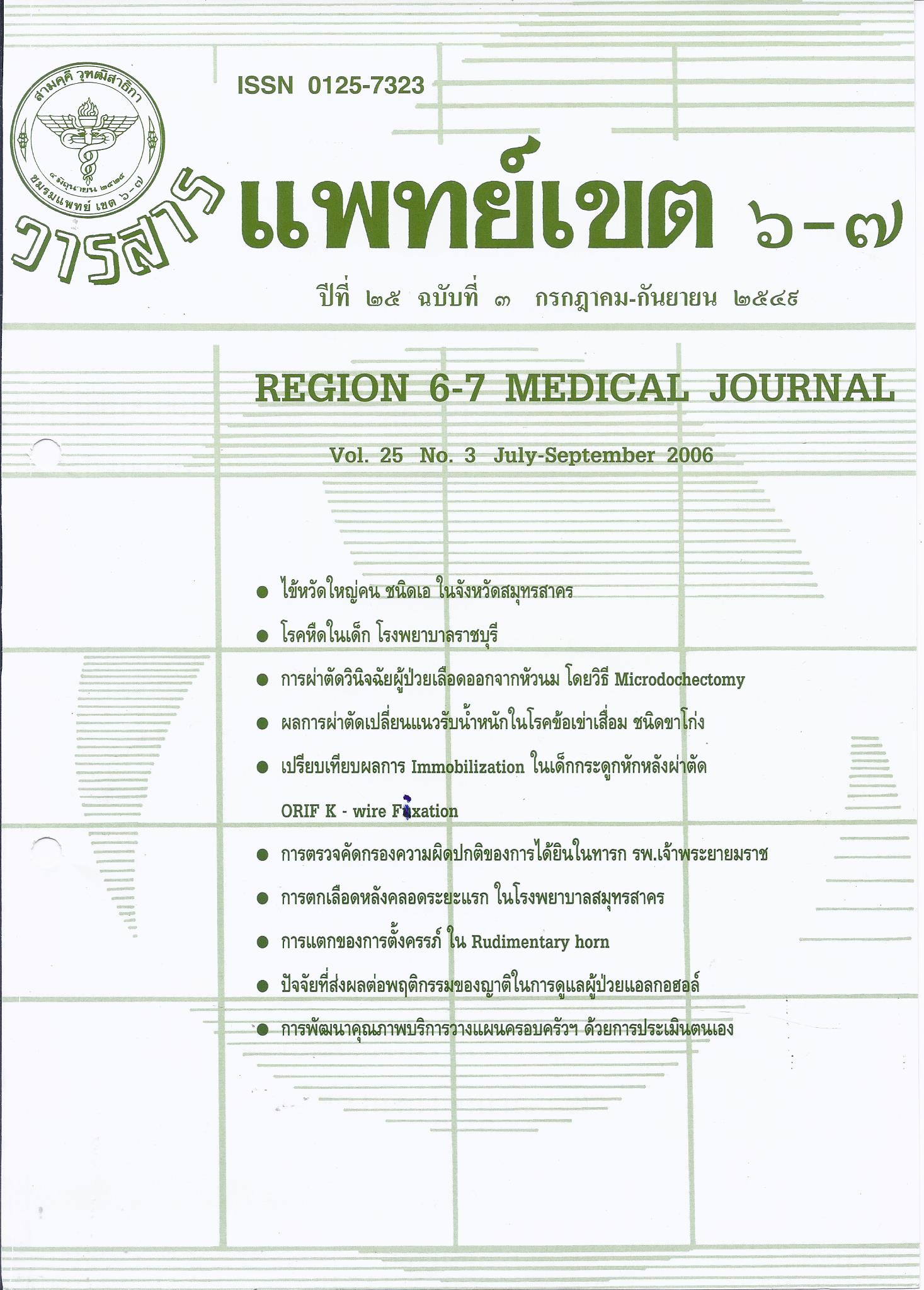เปรียบเทียบผลการ Immobilization ระหว่าง 2 และ 4 สัปดาห์ ในเด็กกระดูกหักเหนือข้อศอกชนิดเคลื่อนออกจากกัน หลังการผ่าตัด ORIF with K - wire Fixation
บทคัดย่อ
This study was to compare the results of immobilized duration in children with supracondylar fractures type 3 treated in Phrachomklao Hospital, Petchaburi. From August, 2002 to February. 2005. All 40 cases were operated ; Open reduction internal fixation (ORIF) with pins and used long arm slap for immobilization. We devided cases into two groups, group one were immobilized for 4 weeks and group two were immobilized for 2 weeks. Every cases the pin were removed after operation for 4 weeks. Follow up the patients at 2, 4, 6, 8 and 12 weeks. The evaluation used 1) The union of fractures 2) Deformities of elbow 3) range of motion of elbow. The result of this study were : all patients had union of fracture and no deformity of elbow. The range of motion was difference between two groups, 15 cases in group two (78.95%) had extention nearing 0 degree within 8 weeks, but not found in group one within 8 weeks (0%). Only 3 cases (14.28%) in group one had extention nearing 0 degree within 12 weeks. Furthermore, 14 cases in group two (73.68%) had flexion nearing 150 degree within 8 weeks and 5 cases in group two (21.05%) had extention nearin 150 degree within 12 weeks. While there were no case in group one (0%) had flexion nearing 150 degree within 8 weeks, only 3 cases (14.29%) had flexion nearing 150 degree within 12 weeks.
In conclusion, immobilization in children for 4 weeks had more serious problem in the range of motion than 2 weeks.
ดาวน์โหลด
เผยแพร่แล้ว
รูปแบบการอ้างอิง
ฉบับ
ประเภทบทความ
สัญญาอนุญาต
ลิขสิทธิ์บทความเป็นของผู้เขียนบทความ แต่หากผลงานของท่านได้รับการพิจารณาตีพิมพ์ลงวารสารแพทย์เขต 4-5 จะคงไว้ซึ่งสิทธิ์ในการตีพิมพ์ครั้งแรกด้วยเหตุที่บทความจะปรากฎในวารสารที่เข้าถึงได้ จึงอนุญาตให้นำบทความในวารสารไปใช้ประโยชน์ได้ในเชิงวิชาการโดยจำเป็นต้องมีการอ้างอิงถึงชื่อวารสารอย่างถูกต้อง แต่ไม่อนุญาตให้นำไปใช้ในเชิงพาณิชย์




